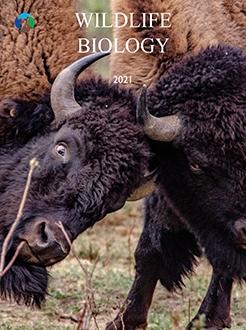Gunshots are a worldwide source of anthropogenic disturbance, and knowledge about the potential effect on wildlife is central for conservation and sustainable management of affected species. This study contributes novel insight of the response behaviour and effect of gunshot disturbance on one of the most culturally important seabird species of the Arctic, the thick-billed murre (Brünnich's guillemot, Uria lomvia). We studied effects of gunshot disturbance at breeding colonies to explore the distance where effects started, the difference in the behavioural response between presumed disturbed colonies (e.g. by traffic and hunting) and largely undisturbed colonies, and among plots with varying seabird densities. We carried out two different types of controlled gunshot experiments – one measuring the distance at which murres first reacted to gunshots (flight initiation distance, ‘FID') and one measuring the proportion of murres remaining in the colony during and after repeated gunshots (20 gunshots within 78 min). FID varied from 0.5 to 5 km. The proportion of murres remaining in the plot after the repeated gunshots ranged from 0.44 to 0.8. Mainly murres not attending offspring took off when disturbed by gunshots, but occasionally also birds incubating their egg or brooding their chick took off. We found that density of seabirds (murres and black-legged kittiwakes Rissa tridactyla) at the plot area scale was the best explaining factor for FID, and to some extent also for the effect of repeated gunshots, both for disturbed and undisturbed colonies. Murres in denser colonies reacted earlier (had larger FIDs) and somewhat more strongly (higher proportions fleeing) to gunshots than murres in less densely populated colonies. FID clearly showed that the current legislation in Greenland regulating gunshots near breeding colonies is insufficient. We provide some recommendations for improved management of a popular game species under pressure.
How to translate text using browser tools
15 March 2021
Reactions of a colonial seabird species to controlled gunshot disturbance experiments
Aili Lage Labansen,
Flemming Merkel,
Anders Mosbech

Wildlife Biology
Vol. 2021 • No. 1
2021
Vol. 2021 • No. 1
2021
flight initiation distance
gunshot disturbance
seabird colonies
Thick-billed Murre
Uria lomvia
wildlife





